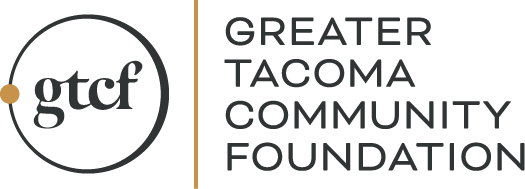
Community
8
Understanding Your Community Helps Charitable Giving Support Racial Equity
Since COVID-19 shut down schools, the Hilltop Artists’ glass hot shop furnaces at Jason Lee Middle School have been idle. But, Hilltop Artists’ support for youth continues. On a recent afternoon, Executive Director Dr. Kimberly Keith worked from the dining room of the house where she grew up, via video meetings, getting creative with staff and community partners about how to make ends meet and keep students connected through what promises to be a tumultuous summer.
“When I went to Jason Lee back in the ‘70s—mixed-race with a single mom and free lunch—the world was different,” Kimberly said. Today, the landscape has changed, but there’s a lot that’s stayed the same, “I take being a role model very seriously.” The mentorship she received years ago prepared her to continue what she calls a “virtuous circle” through Hilltop Artists—connecting young people from diverse backgrounds to a better future through glass art.
Local and international protests and a surge in public discussion about systemic racism have many people asking how they can make a positive difference. Charitable giving to organizations led by people of color, like Hilltop Artists, is one way to support racial equity.
The Association of Black Foundation Executives (AFBE) released a list of imperatives for the philanthropic sector in a joint statement on COVID and police shootings. Their first imperative is Build Agency, “Increase investments in Black-led organizations that connect individuals and families to a wide array of resources and build power in our communities to lead substantive change.” Those investments, according to AFBE, require “a robust partnership” between philanthropists, government, businesses, and Black communities.
GTCF fundholder Jim Walton—a long-respected voice for racial justice in Tacoma—agreed that supporting Black-led organizations is important, but he sees understanding as a critical first step, “Be at the core of this new awareness. Ground yourself. Take time to learn and understand what’s going on in your community so you can maximize your resources, and then let GTCF help you put that in place.” He described his ‘bottom line’ this way: “The organizations I fund must have an impact on African-American people. It’s an added bonus if they’re led by an African-American.”
Jim Walton’s approach, according to Robin Callahan, VP of Philanthropic Services at GTCF, shows how a giving strategy can support a donor’s vision for impact, “A strategy starts with identifying the community issues you care deeply about. Next consider at which point in the system you would like to make your impact – do you want to support work dismantling systems of racial inequity through advocacy or policy change or provide services to those disproportionately impacted by racial inequity? Gaining community insight is critical to understanding who and what organizations in our community are doing that work well.”
AHAT Homecare Executive Director David Strong is a self-described “Black gay man with health issues.” He spoke to the power of knowing the people whose lives you want to impact. AHAT Homecare offers Affordable Housing and Treatment to people living with HIV/AIDS and Hepatitis C. Most of his staff and clients are Black. “If it weren’t for racial inequity, we wouldn’t exist,” he said. David and his staff know exactly what their clients are up against, from lack of access to healthcare and an inherent mistrust of the medical system to the everyday struggle of racism.
That frame of reference makes his team powerful allies for their clients. And yet, David said—just as he was mindful of the potentially perilous questioning his Black graveyard-shift employees might attract traveling to and from work during a recent Tacoma curfew—he believes he faces more scrutiny from funders and colleagues as a Black leader, “Just having this conversation about race and the nonprofit world feels risky. Will it impact my relationships? Will funders and colleagues misunderstand?”
With COVID-19 conditions disproportionately affecting people of color and challenging nonprofit operations and service delivery, donor contributions are essential. “It needs to be more sustained and aimed at capacity building; not crisis-to-crisis in response to news headlines,” according to Jim Walton. David Strong and Kimberly Keith agree, and are living examples of the Black-led organizations AFBE says “have less staff, smaller budgets, and less operating reserves than white-led organizations.”
Meanwhile, the close and critical work toward racial equity continues: “Kids come talk to me about how they feel about being Black, gay … whatever,” said Kimberly Keith. “I offer them that safe space to share thoughts and feelings and that’s how we make the world a better place—one person at a time, one conversation at a time.”
The best place for donors to start is by learning more about the leaders and organizations in your community. “Get immersed in what is going on so you have some connection,” advised Jim Walton. “Then your giving starts to come from your heart and not just from your head. Follow your money. Stay engaged.”
Resources:
Black Foundation Executives Request Action by Philanthropy on Anti-Black Racism
Free Audiobook Generosity to Justice by Darren Walker, CEO of the Ford Foundation


